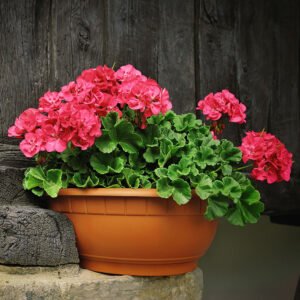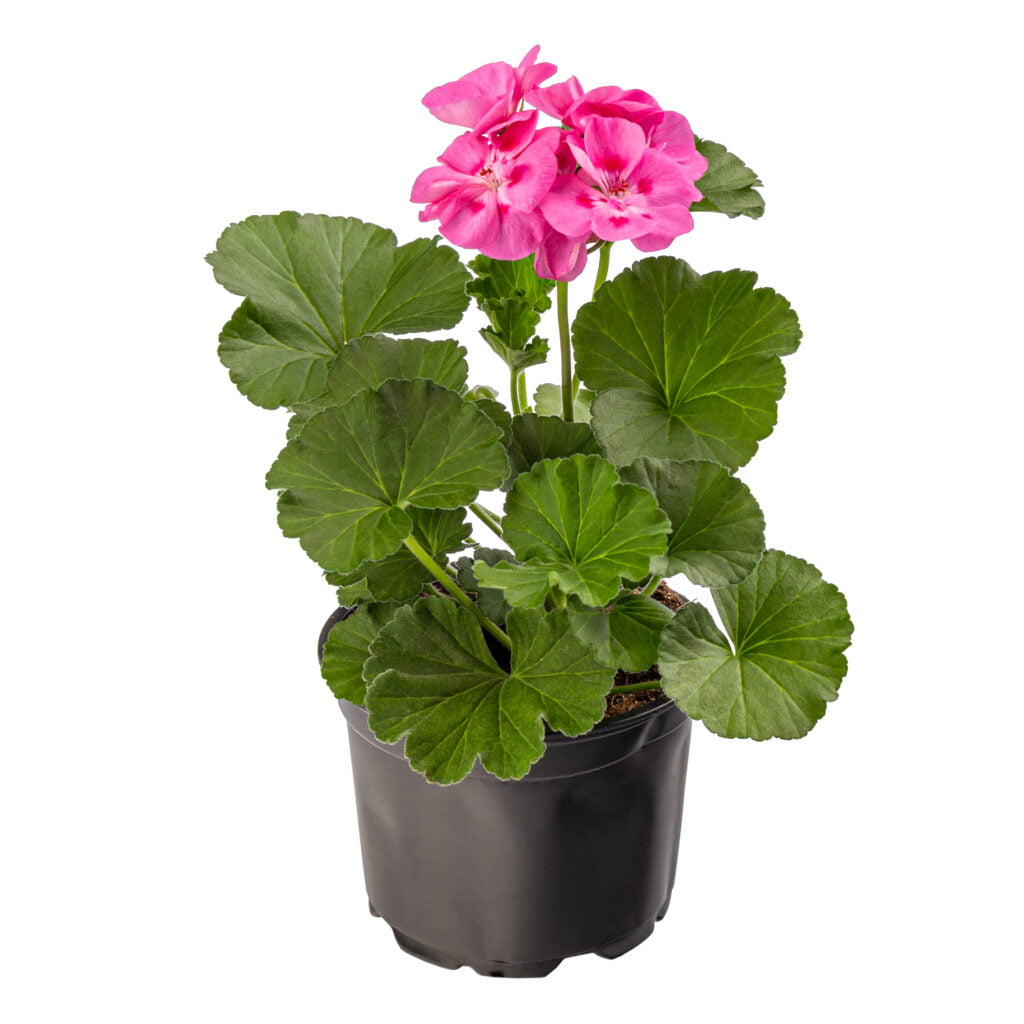Introduction
Geraniums, with their vibrant flowers and lush foliage, have become a staple in many households. The adaptability of these plants, combined with their captivating appearance, makes them an absolute delight to cultivate. This comprehensive review delves into the myriad of ways to ensure the flourishing growth of this indoor marvel. Let’s embark on a green journey that illuminates every aspect of the indoor Geranium plant care.
Geranium Indoor Plant Details
| Specification | Details |
|---|---|
| Common Names | Geranium, Cranesbill (for true Geraniums) |
| Botanical Name | Geranium (True Geraniums); Pelargonium (commonly referred to as Geraniums) |
| Family | Geraniaceae |
| Plant Type | Perennial |
| Mature Size | Varies by type but typically 12-24 inches in height |
| Sun Exposure | Full to partial sun; indoors prefer bright, indirect light |
| Soil Type | Well-draining potting mix |
| Soil pH | Neutral (6.5-7.5) |
| Bloom Time | Spring to Fall |
| Flower Color | Varies – red, pink, white, purple, and orange depending on the type |
| Hardiness Zones | Typically 9-12 for Pelargoniums; 4-8 for true Geraniums |
| Native Area | Southern Africa for Pelargoniums; temperate regions globally for true Geraniums |
| Benefit | Aesthetically pleasing, can repel certain pests, and some have fragrant leaves |
The vital specifications of the indoor Geranium plant. It encapsulates essential details that can help gardeners and enthusiasts understand the plant better and cater to its specific needs.
Plant Care
An indoor Geranium isn’t just another green plant. It’s a kaleidoscope of nature, demanding specific but simple care. Active and regular care ensures these plants remain vibrant and alive for years, proving the saying that with great care, comes abundant blooms.
Light
Let there be light for your Geraniums! This plant craves six to eight hours of sunlight daily. While direct sunlight is their best friend, it’s crucial to ensure they aren’t torched with afternoon heat. A bright, east-facing window is an ideal spot, offering them morning rays which they love.
Soil
The foundation of any plant’s health lies in the soil. Geraniums prefer well-draining soil with a neutral pH level. Overly clayey or sandy soils can be detrimental. Mix in some organic compost with your potting mix to enhance soil structure and nutrients.
Water
Water is the elixir of life but moderation is key. Over-watering is a common error. Geraniums like to dry out between waterings. Ensure the pot has draining holes and only water when the top inch of soil feels dry. This prevents root rot and keeps the plant thriving.
Temperature and Humidity
Geraniums are picky about temperatures. Ideal range lies between 65-70°F during the day and a tad cooler during nights. Humidity is rarely an issue but ensuring good air circulation is paramount. This prevents fungal problems that geraniums can sometimes fall victim to.
Fertilizer
A well-fed Geranium is a happy Geranium. During active growing seasons, a balanced liquid fertilizer every two weeks is recommended. But remember, during winters, as growth slows, reduce the frequency or stop fertilizing until spring.
Pruning
Pruning is the art of enhancing plant shape and health. Regularly pinching off spent flowers and yellowing leaves keeps the plant looking fresh. An annual trim, reducing the plant by one-third, can work wonders for robust growth in subsequent seasons.
Overwintering
Geraniums can be perennial if cared for correctly. Before frost strikes, bring them indoors and place in a bright spot. Water sparingly and ensure the temperature doesn’t plummet too much. This ensures they spring back to life once warmer days return.
Propagating Plant
Share the joy of Geraniums! They can be easily propagated using stem cuttings. Cut a 4-inch segment, let it air dry for a day, and then plant it in a pot. With adequate moisture and light, you’ll have a new plant in no time.
Types of Plants
The Geranium genus is vast and incredibly diverse. Though people commonly refer to both Pelargoniums and true Geraniums as ‘Geraniums’, it’s essential to distinguish between them.
- True Geraniums (Cranesbill): These are perennial and typically have a mounding habit. Their flowers are generally smaller but are profuse in shades of blues, purples, and whites.
- Pelargoniums (often referred to as Geraniums): These are the types you’ll frequently find in pots. They come in a variety of types including:
- Zonal Pelargoniums: Identified by “zones” or patterns on their leaves.
- Ivy-leaved Pelargoniums: They have a trailing habit, making them ideal for hanging baskets.
- Regal or Martha Washington Pelargoniums: They boast larger and more vibrantly patterned flowers.
- Scented-leaf Pelargoniums: As the name suggests, their leaves emit fragrant scents when touched.
Common Pests & Plant Diseases with Solutions
Pests:
- Aphids: These tiny green bugs can be a menace. Solution: Use a mild soap solution or neem oil spray.
- Whiteflies: Tiny white-winged insects that can weaken the plant. Solution: Introduce beneficial insects like ladybugs or use insecticidal soap.
Diseases:
- Botrytis Blight: A fungal disease causing gray mold on plants, especially when humidity is high. Solution: Remove infected parts and increase ventilation.
- Rust: Seen as orange or yellowish-orange blisters on leaves. Solution: Remove affected leaves and avoid overhead watering.
How to Get the Plant to Bloom
The secret to a blooming Geranium lies in its care:
- Light: Ensure they get adequate light. Without enough light, blooming may be sparse or non-existent.
- Pruning: Regularly pinch back the plant to encourage bushier growth and more blooms.
- Fertilizer: Feed them with a phosphorus-rich fertilizer to encourage blooming.
Common Problems with the Plant
- Leggy Growth: Often due to insufficient light. Solution: Move the plant to a brighter location and consider pruning back long stems.
- Yellowing Leaves: Could be a sign of over-watering, poor drainage, or insufficient light. Solution: Ensure proper watering habits and move the plant to a brighter spot.
- No Flowers: Insufficient light or nutrients can lead to a lack of blooms. Solution: Move to a brighter location and feed with a bloom-boosting fertilizer.
Understanding the different types of Geraniums and addressing their common issues is key to a thriving, blooming plant. Whether you’re a seasoned gardener or a novice, the world of Geraniums promises a colorful and rewarding experience.
Quickly Declining
Watch out for signs of decay. Yellowing leaves, wilting, or black stems indicate over-watering or fungal attacks. Adjust your care routine promptly to reverse these symptoms and get your plant back on the path to health.
In Summary: A Blooming Gem in Home Gardens
Caring for Geraniums is more than just a gardening task; it’s a rewarding experience. With consistent attention to their light, soil, and water needs, and regular grooming, you’re sure to have a thriving plant that’s the envy of all.
Frequently Asked Questions
Decode the magic of gardens with our guide to Landscaping Styles Frequently Asked Questions.
- Generally, every 2-3 years, but if it seems root-bound or its growth stunts, consider repotting sooner.
- This can be a sign of stress, often due to insufficient light or over-watering. Adjust its environment accordingly.
- Absolutely! While this review focuses on indoor care, Geraniums also flourish outdoors during warmer months.
- Like most plants, they can attract pests like aphids or whiteflies. Regular check-ups and natural remedies usually keep them at bay.
Recent Posts
- Personalized Space Decor Making Your Home Uniquely Yours
- Transforming Junk into Decor Upcycling at Its Best
- Second-Life Decor Objects Giving Old Items New Purpose
- Environmentally Friendly Styling Decor with a Conscience
- Handmade Table Decorations Crafting Unique Tabletop Displays
- Elegant Table Settings Ideas for Sophisticated Dining
- Creative Recycling in Decor Environmentally Friendly Ideas
- Upcycled Furniture Projects Reinventing Your Old Pieces
- Fabric Decor Trends What’s Hot in Textile Design
- Contemporary Wall Graphics Bold Statements for Your Walls











